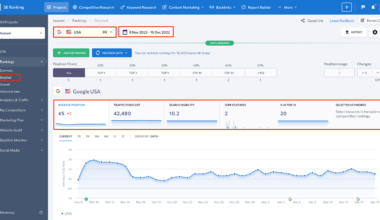Introduction to Voice Search SEO
As technology continues to advance, the way we search for information online is evolving. One of the most significant changes in recent years has been the rise of voice search. With the proliferation of smart speakers and virtual assistants, more and more people are using their voices to search for information online.
As a result, businesses and website owners must adapt their SEO strategies to ensure they remain visible and relevant in a voice search world. This is where voice search SEO comes in.
Voice search SEO is the process of optimizing website content to make it more easily discoverable by voice search algorithms. By understanding how voice search technology works and implementing best practices, businesses can improve their chances of appearing in voice search results and reaching a wider audience.
In this article, we will explore the key aspects of voice search SEO, including understanding voice search technology, optimizing website content, utilizing schema markup, and more. By the end of this guide, you will have a solid understanding of how to implement voice search SEO and take your website to the next level.
Understanding Voice Search Technology
The first step in implementing a successful voice search SEO strategy is to understand how voice search technology works. Voice search uses natural language processing (NLP) and artificial intelligence (AI) to understand and interpret user search queries. This means that voice search algorithms are constantly learning and evolving to better understand user intent and deliver more accurate results.
One of the key differences between traditional text-based search and voice search is the way users phrase their queries. When typing a search query, users tend to use short and concise phrases. However, when speaking to a virtual assistant or smart speaker, users tend to use more conversational and natural language. For example, a user might type “best pizza near me”, but when speaking to their virtual assistant, they might say “hey Siri, where’s the best place to get pizza near me?”
To optimize for voice search, website owners and businesses must understand how users are phrasing their queries and use that information to optimize their content accordingly. This means using long-tail keywords and incorporating conversational language into website content.
Another important aspect of voice search technology is the importance of featured snippets. When a user conducts a voice search, the virtual assistant will often read out a featured snippet from one of the top-ranking search results. To increase the chances of appearing in a featured snippet, website owners should focus on providing clear and concise answers to frequently asked questions on their website.
It’s also important to note that voice search is heavily reliant on local search. In fact, according to a study by BrightLocal, 58% of consumers have used voice search to find local business information in the past year. This means that businesses must focus on optimizing their local SEO strategy to improve their chances of appearing in voice search results.
Overall, understanding voice search technology is key to implementing a successful voice search SEO strategy. By understanding how users phrase their queries, the importance of featured snippets, and the role of local search, businesses can optimize their website content and improve their chances of appearing in voice search results.
Optimizing Website Content for Voice Search
Optimizing website content for voice search requires a different approach than traditional SEO. Here are some tips to optimize your website content for voice search:
1. Use Natural Language and Conversational Tone
When optimizing for voice search, it’s essential to use natural language and conversational tone. Voice search queries are more conversational and natural than text-based queries, so your website content should reflect that. Use long-tail keywords that sound more like a conversation than a keyword to optimize for voice search.
For example, instead of using the keyword “best pizza near me,” use a conversational phrase like “where can I find the best pizza in my area?” This way, your content is more likely to match the user’s search query.
2. Focus on Answering Questions
Voice search queries are more likely to be in the form of a question, so it’s crucial to focus on answering questions in your website content. Use the “5 W’s” (who, what, where, when, why) and “how” to structure your content to provide answers to frequently asked questions.
For example, if you run a restaurant, create a FAQ page that answers questions like “What are your hours of operation?” or “What is your menu like?” This way, your website is more likely to appear in the featured snippets of voice search results.
3. Optimize for Local Search
As mentioned earlier, voice search is heavily reliant on local search. Make sure to optimize your website content for local search by including your business’s name, address, and phone number (NAP) on every page of your website.
Also, create a Google My Business account and optimize it with accurate information, photos, and reviews. This way, when users search for businesses like yours in their local area, your website is more likely to appear in the voice search results.
4. Use Structured Data Markup
Structured data markup helps search engines understand the content on your website better. Use schema markup to provide search engines with more detailed information about your website content.
For example, if you run a restaurant, use schema markup to provide information about your menu, prices, and reviews. This way, search engines can provide more detailed information to users, and your website is more likely to appear in the featured snippets of voice search results.
In conclusion, optimizing website content for voice search requires a different approach than traditional SEO. Use natural language and conversational tone, focus on answering questions, optimize for local search, and use structured data markup to optimize your website content for voice search. By implementing these tips, your
Utilizing Schema Markup for Voice Search
Structured data markup, also known as schema markup, is a type of code that helps search engines better understand the content on your website. By adding schema markup to your website, you can provide search engines with more detailed information about your website content, which can improve your chances of appearing in voice search results.
Here are some tips for utilizing schema markup for voice search:
1. Use Schema Markup for Frequently Asked Questions
As mentioned earlier, voice search queries are often in the form of questions. To improve your chances of appearing in voice search results, add schema markup for frequently asked questions (FAQs) on your website. This can help search engines better understand the questions and answers on your website and improve your chances of appearing in featured snippets.
For example, if you run a restaurant, you can add schema markup for questions like “What are your hours of operation?” or “What is your menu like?” This way, when a user asks a similar question to their virtual assistant, your website is more likely to appear in the featured snippets of voice search results.
2. Use Schema Markup for Local Business Information
Since voice search is heavily reliant on local search, it’s important to add schema markup for local business information on your website. This can include your business’s name, address, and phone number (NAP), as well as information about your business’s hours of operation and reviews.
For example, if you run a restaurant, you can add schema markup for your business’s name, address, and phone number on every page of your website. This way, when a user asks for restaurants in their local area, your website is more likely to appear in the voice search results.
3. Use Schema Markup for Product Information
If your website sells products, it’s important to add schema markup for product information. This can include the product’s name, price, and availability.
For example, if you run an e-commerce website that sells clothing, you can add schema markup for each product’s name, price, and availability. This way, when a user asks for clothing products, your website is more likely to appear in the featured snippets of voice search results.
In conclusion, utilizing schema markup can improve your chances of appearing in voice search results. Add schema markup for frequently asked questions, local business information, and product information to help search engines better understand your website content and improve your chances of appearing in voice search results.
Local SEO and Voice Search
As mentioned earlier, voice search is heavily reliant on local search. This means that businesses must focus on optimizing their local SEO strategy to improve their chances of appearing in voice search results.
Here are some tips to optimize your local SEO strategy for voice search:
1. Claim Your Google My Business Listing
Claiming your Google My Business listing is crucial for local SEO. Make sure to add all relevant information, including your business’s name, address, phone number, hours of operation, and website URL. This way, when users search for businesses like yours in their local area, your business is more likely to appear in the voice search results.
2. Use Local Keywords in Your Website Content
Using local keywords in your website content is essential for optimizing your local SEO strategy for voice search. Make sure to include your business’s location in your website content, including your website’s meta descriptions, header tags, and content.
For example, if you run a restaurant in New York City, make sure to include keywords like “best restaurants in New York City” or “top-rated restaurants in NYC” in your website content. This way, when users conduct a voice search for restaurants in New York City, your website is more likely to appear in the voice search results.
3. Encourage Customer Reviews
Customer reviews are crucial for local SEO. Encourage your customers to leave reviews on your Google My Business listing, Yelp, or other relevant review sites. This way, when users search for businesses like yours in their local area, your business is more likely to appear in the voice search results.
4. Use Local Structured Data Markup
Adding local structured data markup to your website can help search engines better understand your website’s content and improve your chances of appearing in voice search results. Use schema markup to provide search engines with more detailed information about your business’s location, hours of operation, and reviews.
For example, if you run a restaurant, use schema markup to provide information about your menu, prices, and reviews. This way, search engines can provide more detailed information to users, and your website is more likely to appear in the featured snippets of voice search results.
In conclusion, optimizing your local SEO strategy for voice search is essential for businesses that rely on local search. Claim your Google My Business listing, use local keywords in your website content, encourage customer reviews, and use local structured data markup to optimize your local SEO strategy for voice search. By implementing these tips, your business can improve its chances of appearing in the voice search results and reach a wider audience.
Final Thoughts on Voice Search SEO
In conclusion, voice search SEO is becoming increasingly important for businesses and website owners. With the rise of smart speakers and virtual assistants, more and more people are using their voices to search for information online. Therefore, it’s crucial to optimize your website content for voice search to remain visible and relevant in today’s digital landscape.
To implement a successful voice search SEO strategy, it’s essential to understand how voice search technology works and how users phrase their queries. By incorporating natural language and conversational tone, focusing on answering questions, and optimizing for local search, businesses can improve their chances of appearing in voice search results.
Utilizing structured data markup for frequently asked questions, local business information, and product information can also improve your chances of appearing in voice search results. By providing search engines with more detailed information about your website content, you can improve your website’s visibility and reach a wider audience.
In summary, optimizing for voice search is essential for businesses and website owners looking to stay ahead of the competition. By following the best practices outlined in this guide, you can improve your website’s visibility in voice search results and reach a wider audience.






















